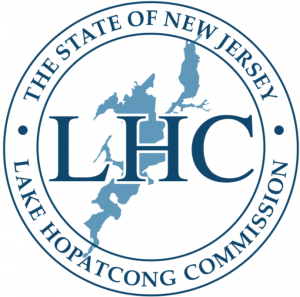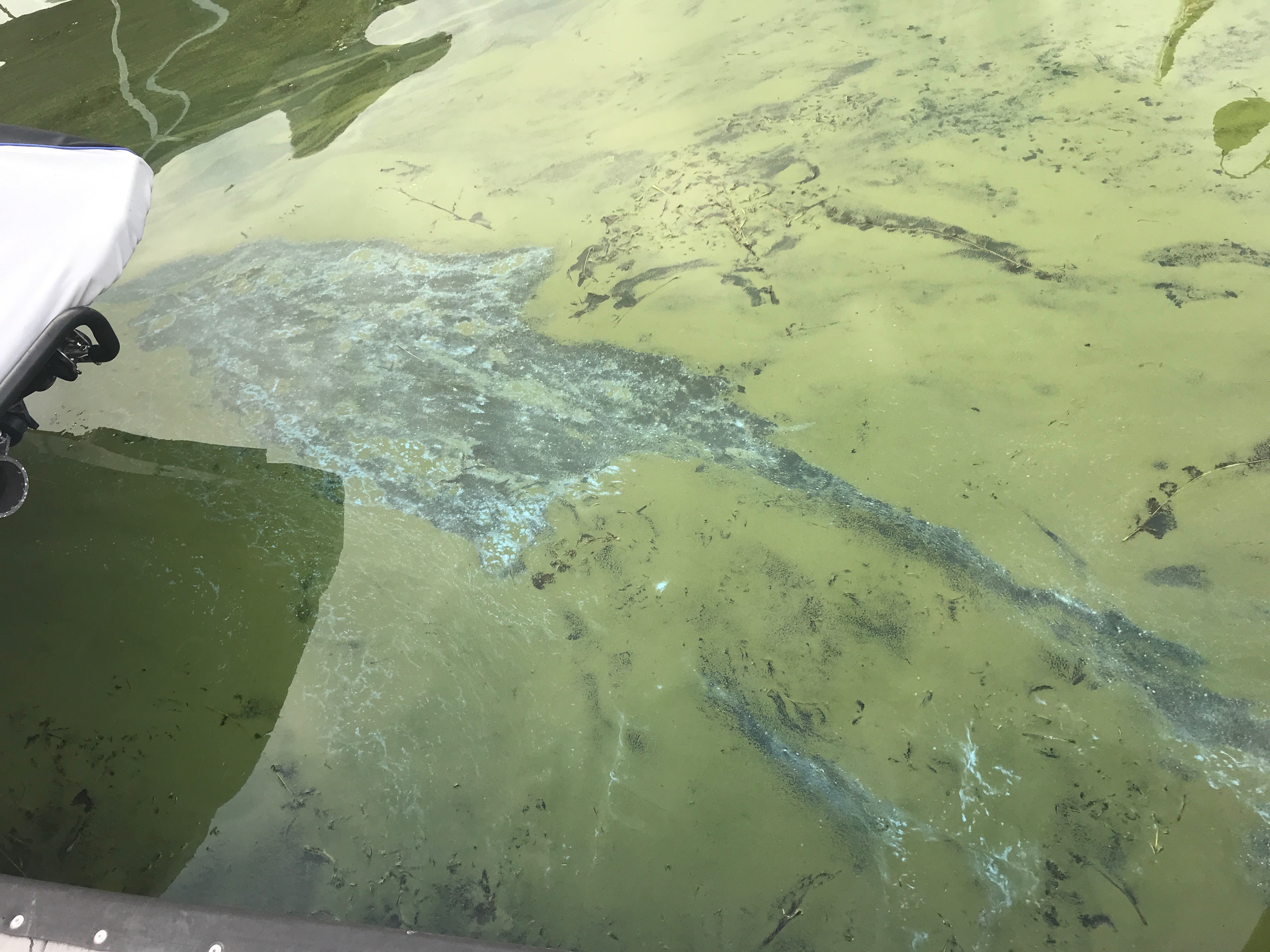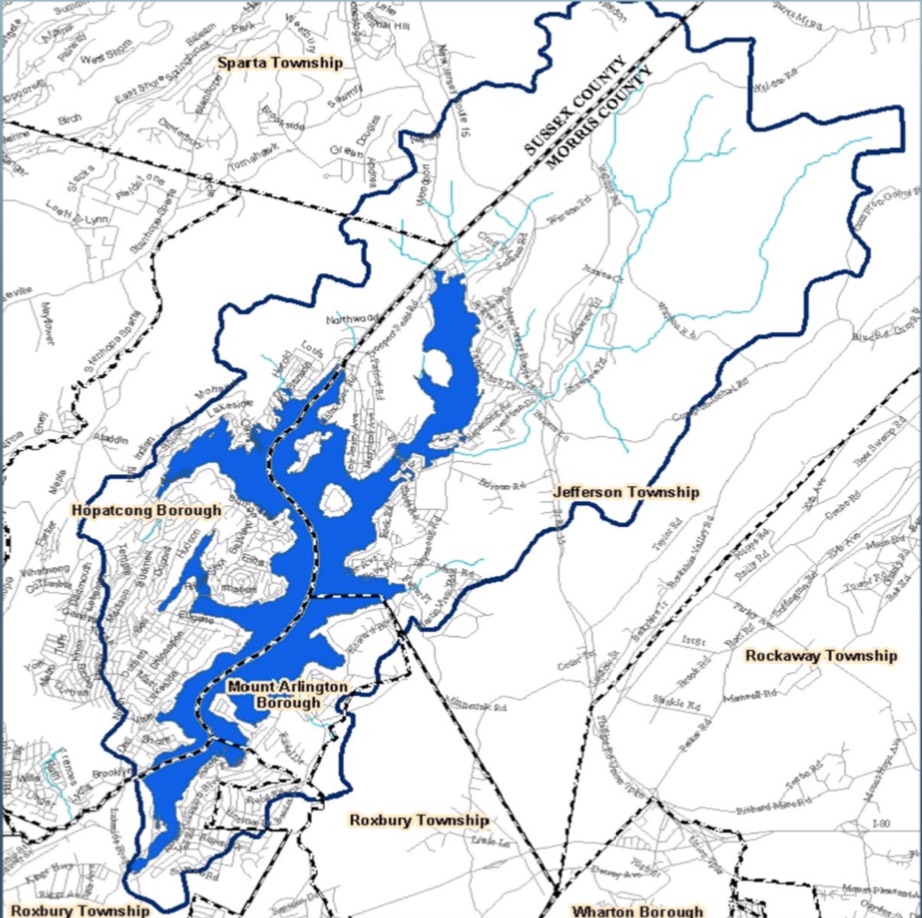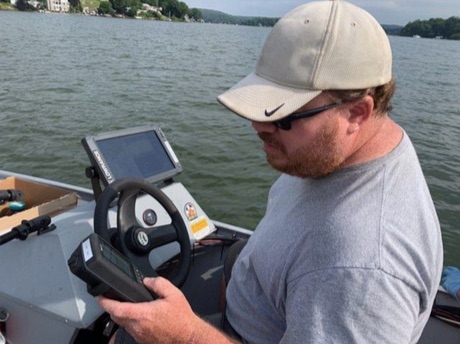
On July 8, 2019 the Lake Hopatcong Commission held their regular monthly meeting. Due to the advisory against direct bodily contact with the waters of Lake Hopatcong the meeting focused on the harmful algal bloom on Lake Hopatcong. The New Jersey Department of Environmental Protection (DEP) provided a presentation on the harmful algal bloom (HAB) on Lake Hopatcong, while the Commission’s environmental consultant, Princeton Hydro gave a presentation with background information and testing results from eight near-shore locations on the lake.
NJDEP has released a new website to provide HAB sample data, which they will update regularly with the results of samples collected on Tuesday’s and Thursday’s for the duration of the HAB. The DEP is also conducting aerial surveillance every Wednesday, which measures phycocyanin presence in the lake. Phycocyanin is a photosynthetic pigment present in cyanobacteria. DEP uses the detection of phycocyanin as an indicator that cyanobacteria is present, however additional testing must be completed to confirm whether a bloom is harmful. Two continuous monitoring buoys have also been installed in Lake Hopatcong, which can help scientists understand the factors that influence HAB’s and may help predict their occurrence in the future. Buoys will monitor water quality parameters as well as phycocyanin presence at five minute intervals. Below is a recap of topics from both presentations made on Monday night.
What are blue-green algae?
Blue-green algae are not algae, but are a type of bacteria called cyanobacteria that are normally present in many lakes. It is not normal however, for it to bloom and become toxic. Cyanobacteria thrive in warm, nutrient-rich water. When conditions are right, the bacteria can grow into quickly forming “blooms”. Some freshwater cyanobacterial blooms are able to produce toxins, known as cyanotoxins.
What are Cyanotoxins?
Cyanotoxins are produced and contained within the some species of cyanobacteria. The release of these toxins in an algal bloom into the surrounding water occurs most often during cell death and lysis (i.e., cell rupture) as opposed to continuous excretion from the cyanobacteria cells.

What caused the June 2019 bloom?
When a bloom such as the one in Lake Hopatcong occurs, it is indicative of an ecosystem that is out of balance. Many factors can influence the presence of a HAB, but they are often related to human nutrient enrichment. The results of Princeton Hydro’s May 2019 water quality monitoring indicated higher than normal phosphorus concentrations in the lake. When they compared these results against rainfall data for Spring 2019 it indicates that phosphorus was being washed from the watershed into the lake. The wet spring and 70-80-degree days helped to generate the blooms. Calm water and warm weather can also help to promote growth of a HAB.

How to manage HAB’s and control or prevent future blooms?
The best way to manage and control the current bloom and future blooms is to limit the amount of nutrients entering Lake Hopatcong. cyanobacteria need nutrients to persist, so we can limit their growth by limiting their nutrient supply. This can be accomplished through good stormwater management, septic management, ceasing fertilizer use, and picking up after our pets. The Lake Hopatcong Commission is working with Princeton Hydro on a watershed implementation plan that will act as a blueprint on how to reduce phosphorus input to the lake. The Lake Hopatcong Commission and Lake Hopatcong Foundation have received grants and implemented projects to reduce phosphorus in Lake Hopatcong by one third, but we still have to reduce phosphorus in the lake by an additional 66% to reach the TMDL (total maximum daily load) of phosphorus. Princeton Hydro indicated that up to 80% of the phosphorus that enters the lake comes from failing septic systems and stormwater. It is also important to remember that residents can implement techniques to reduce stormwater runoff on their property, and that everyone in the entire Lake Hopatcong Watershed has an opportunity to improve the lake’s water quality through proper septic and property maintenance.
What is DEP’s strategy to monitor the HAB?
DEP response is a tiered approach focused on reducing the greatest levels of exposure. They work with local health departments and other local government agencies to monitor blooms. Monitoring is done through visual observation, field screening, test strips and laboratory identification of cyanobacteria species, toxin levels, and total cell count. Currently the DEP is monitoring the lake twice a week on Tuesdays and Thursdays and conducting weekly aerial surveys of the lake on Wednesdays. DEP uses advanced technology such as hand held phycocyanin meters, aircraft sensing, continuous monitoring buoys (which monitor temperature, conductance, dissolved oxygen, pH, turbidity, and phycocyanin) the buoys take readings every five minutes and data is available through the Division of Water Monitoring & Standards Continuous Monitoring Program. DEP has implemented an alert system, yellow signs indicates a suspected HAB & red signs indicates a confirmed HAB above DEP thresholds.

How does DEP determine when to lift the advisory on Lake Hopatcong?
DEP maintains that their first priority is the protection of human health. They will continue field monitoring and lab analyses until results are below the NJ Health Advisory Guidance Levels (for beaches – 2 consecutive samples below thresholds required to open). DEP is using a regional approach to interpret sample results, which means they are comparing results from adjacent sample locations to confirm data trends on the lake. They indicate that they will compare adjacent sampling stations prior to re-opening any part of the lake or the lake as a whole. Based on results presented at the July 8, 2019 Lake Hopatcong Commission meeting, the DEP has indicated that there are currently no data trends that indicate that the bloom is below threshold in any region of the lake. They have confirmed that they would consider opening one part of the lake if data for that area is below thresholds.
What are the health risks?
Human health risks include flu like symptoms, gastrointestinal issues, rashes, but sensitivity may very between people. If toxin concentration is high enough it can impact the nervous system. Animals including wildlife, pets, and livestock can be effected including sickness and death.
How to report a suspected HAB?
To report a HAB the Department recommends calling 1-877-WARN-DEP or through the Warn NJDEP mobile app. Apple Android Windows. Once the app has been downloaded, it can be used to report non-emergency environmental incidents. The types of non-emergency incidents that may be reported through the application include improper storage or disposal of waste and other materials, odor complaints, sewage leaks, smoke and dust complaints, underground storage tank incidents, and wetlands or stream encroachment issues. The app is not intended to report life-threatening and/or environmental emergencies. These should be reported by calling 9-1-1, local police orthe DEP’s hotline.
Where can I find more information?
https://www.state.nj.us/dep/hab/
NJDEP July 8, 2019 Presentation
Princeton Hydro July 8, 2019 Presentation
July 2019 Princeton Hydro Cyanotoxin Monitoring Results

